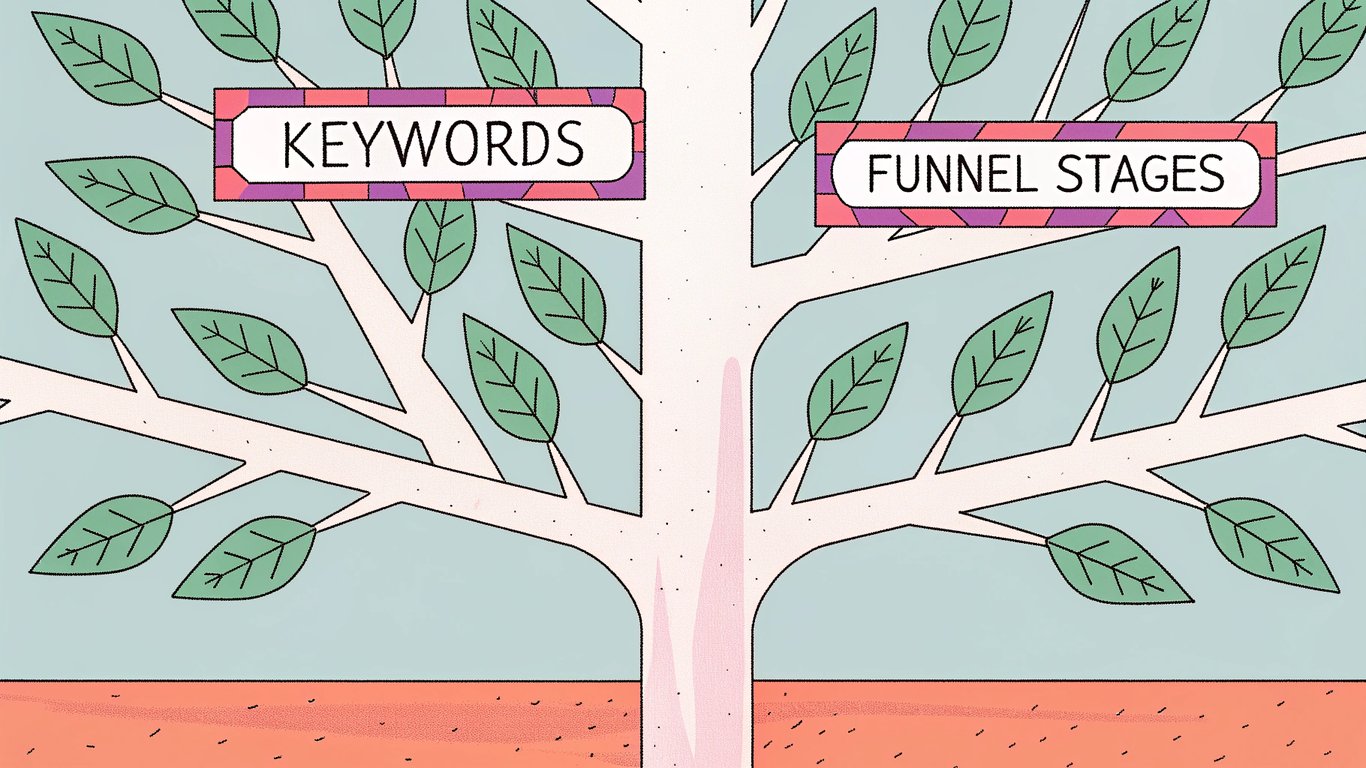Introduction: Why Content Creation for SEO Matters More Than Ever in 2025
Content is still the backbone of search engine optimization, but the rules have changed. If you want to rank in 2025, you can't just churn out a few blog posts stuffed with keywords and hope for the best. Search engines have gotten smarter, users expect more, and the competition is fierce. The days of "good enough" content are long gone.
So what does content creation for SEO actually mean now? In 2025, it's about building genuinely valuable resources that answer real questions, solve problems, and keep people coming back. You need to create SEO-friendly content that search engines can understand and trust, but it also has to be worth a reader's time. That means blending SEO content writing best practices with a deep understanding of what your audience actually wants.

But here's the catch: the landscape is more complicated than ever. AI-generated content is flooding the web, Google's quality standards keep rising, and figuring out what users really mean (search intent) is a moving target. Even experienced marketers struggle to keep up. According to a 2023 Semrush study, over 60% of marketers say that creating content that ranks is their biggest SEO challenge. And that's not likely to get easier.
If you're running a WordPress site, you probably feel this pressure every time you hit "publish." That's where tools like Republish AI come in. Their AI-powered platform is designed to help WordPress users research, write, and optimize content that actually stands out. Whether you're a solo blogger or managing a team, having the right tools can make the difference between page one and page ten.
This guide is packed with practical strategies for creating search engine optimization content that works in 2025. You'll get real-world advice, not just theory. We'll cover everything from understanding search intent to structuring your articles, using AI wisely, and measuring what matters. If you're serious about building a site that gets found and trusted, you're in the right place.
What You'll Learn
- How to create content that satisfies both search engines and real people
- The latest challenges in SEO content writing (and how to overcome them)
- Actionable steps for keyword research and understanding search intent
- Ways to use AI tools (like Republish AI) to streamline your content process
- How to measure, adapt, and refresh your content for long-term SEO success

The Foundation: Understanding Search Intent and Keyword Research
Every piece of content that ranks well starts with a simple question: what are people actually searching for, and why? If you skip this step, you’re basically guessing. And in 2025, with search engines getting smarter and competition from AI-generated content, guessing just doesn’t cut it. The best SEO content strategies are built on a deep understanding of search intent and smart keyword research. This is where you lay the groundwork for everything else—structure, optimization, even the topics you choose. If you get this part right, you’re already ahead of most.
How to Identify Your Audience's Search Intent
Search intent is the reason behind a search query. It’s what the user actually wants to accomplish. If you don’t match your content to the right intent, you’ll struggle to rank—no matter how well you optimize. There are four main types of search intent, and each one calls for a different kind of content. The trick is figuring out which intent matches your target keywords, then building your content around that. The best way to do this? Analyze the search engine results pages (SERPs) for your keywords. Look at what’s already ranking. Are the top results blog posts, product pages, or something else? That’s a huge clue about what Google thinks users want.
Intent Type | What It Means | Example Query | Best Content Type |
|---|---|---|---|
Informational | User wants to learn something or get an answer | "how to optimize images for SEO" | Blog post, guide, tutorial |
Navigational | User wants to reach a specific website or page | "Yoast SEO login" | Homepage, login page, branded landing page |
Commercial | User is researching products or services before buying | "best WordPress SEO plugins" | Comparison post, review, listicle |
Transactional | User is ready to buy, sign up, or take action | "buy Semrush subscription" | Product page, checkout page, sign-up form |
You can spot intent by looking at the SERP features too. If you see lots of "People Also Ask" boxes, Google’s probably seeing informational intent. Shopping ads? That’s transactional. If you’re not sure, just search your keyword and see what comes up. It’s not rocket science, but it’s easy to overlook. And if you get it wrong, you’ll waste time creating content that never gets seen.
Effective Keyword Research Techniques for 2025

Keyword research for content isn’t just about finding high-volume terms. It’s about finding the right opportunities—keywords you can actually rank for, that match your audience’s intent, and that fit your SEO content strategy. The basics haven’t changed much, but the tools and tactics keep evolving. Here’s a step-by-step process that works for most sites, whether you’re running a personal blog or a big ecommerce store.
- Start with Google autocomplete. Type your main topic into Google and see what suggestions pop up. These are real searches people make, and they’re often long-tail keywords with less competition.
- Check the "People Also Ask" section. This is a goldmine for related questions and subtopics. You can use these as headings or even entire articles.
- Use keyword research tools. Platforms like Semrush, Ahrefs, and Moz are still the go-to for in-depth data. They’ll show you search volume, keyword difficulty, and even what your competitors are ranking for.
- Look for long-tail keywords. These are longer, more specific phrases (like "SEO content planning for WordPress blogs"). They usually have lower competition and higher conversion rates.
- Analyze competitor keywords. Plug your competitors’ URLs into your keyword tool and see what’s driving their traffic. If they’re ranking for something relevant, you probably should be too.
- Review the SERPs for your target keywords. Notice what types of content are ranking, what questions are being answered, and what gaps you could fill.
Don’t just chase the highest search volume. Sometimes, a keyword with 100 searches a month and low competition is worth more than a broad term with 10,000. Especially if you’re just starting out or working in a crowded niche. Long-tail keywords are your friend here—they’re specific, less competitive, and often signal a user who’s closer to taking action.
Organizing Keywords by Content Type and Funnel Stage
Once you’ve got a list of keywords, don’t just dump them into a spreadsheet and call it a day. The real magic happens when you organize them by content type, funnel stage, and priority. This is the backbone of any solid SEO content planning process. It helps you see where you have gaps, what to tackle first, and how each piece fits into your overall SEO content strategy.
- Content Type: Blog posts (great for informational intent), product pages (transactional), landing pages (commercial or transactional), FAQs (informational), resource hubs (mixed intent).
- Funnel Stage: Awareness (broad, educational topics), consideration (comparisons, reviews), decision (product demos, sign-up pages).
- Difficulty: Some keywords are much harder to rank for. Use your keyword tool’s difficulty score to prioritize easier wins, especially if your site is new.
- Priority: Focus on keywords that align with your business goals and have a realistic chance of ranking. Don’t waste time on terms you’ll never crack the top 10 for.
Here’s how this might look in practice: Say you run a WordPress site about digital marketing. You find "SEO content planning" (informational, awareness stage), "best SEO plugins for WordPress" (commercial, consideration stage), and "buy Yoast SEO premium" (transactional, decision stage). You’d map each keyword to the right content type and funnel stage, then build your editorial calendar around those priorities. This approach keeps your content focused and makes it way easier to track what’s working.
If you’re using a tool like Republish AI, a lot of this grunt work gets automated. The platform can help you surface keyword opportunities, organize them by intent and funnel stage, and even suggest content ideas based on gaps in your current site. That means less time in spreadsheets and more time actually creating content that moves the needle.
Bottom line: understanding search intent and doing smart keyword research isn’t just step one—it’s the foundation for everything else. Get this right, and you’ll have a roadmap for content that actually ranks, drives traffic, and (most importantly) gives your audience what they’re looking for.
Creating High-Quality, SEO-Optimized Content That Ranks
Content Structure and Formatting Best Practices
If you want your content to rank in 2025, structure is everything. Google, Yoast, and Backlinko all hammer this point home. A well-organized article isn't just easier for search engines to crawl. It's also a lot more pleasant for real people to read. That means you need to think about headlines, headings, paragraph length, and even the way you use images or video. The best SEO copywriting always puts the reader first, but it never forgets about search-optimized content either.
- Start with a compelling headline and intro: Your H1 should grab attention and clearly state what the page is about. The first few sentences need to hook the reader and set expectations.
- Use a clear heading hierarchy: Organize your content with H2s, H3s, and so on. This helps both readers and search engines understand your main points and subtopics.
- Write for scanners: Most people skim. Use short paragraphs, bullet points, and bolded text to make key info pop.
- Include relevant media: Images, infographics, and videos break up text and add value. Make sure every visual actually helps explain or illustrate your point.
- Structure for featured snippets: Use lists, tables, and direct answers to common questions. This increases your odds of landing in Google's "position zero."
Here's a quick look at what works (and what doesn't) when it comes to content structure for SEO:
Well-Structured Content | Poorly Structured Content |
|---|---|
Clear H1, H2, H3 headings | No headings or only H1 |
I've seen even great information get buried in a mess of text. If you want your content quality for search rankings to stand out, make it easy to read and easy to scan. That's what keeps people on the page—and signals to Google that your content deserves to rank.
On-Page SEO Elements That Matter in 2025
On-page SEO isn't just about keywords anymore. It's about making every element of your page work together to help both users and search engines. The basics still matter, but the way you use them has evolved. You want to optimize, not overdo it. Natural, helpful content always wins over keyword stuffing.
- Title tags and meta descriptions: Write unique, descriptive titles and meta descriptions for every page. Include your main keyword naturally, but focus on what will make someone click.
- URL structure: Keep URLs short, readable, and keyword-rich. Avoid random numbers or symbols.
- Keyword placement: Use your target keyword in the title, first paragraph, and a few headings. Sprinkle related terms throughout, but don't force it.
- Image optimization: Add descriptive alt text, use clear file names, and compress images for faster loading. This helps with both accessibility and SEO.
- Internal and external links: Link to other relevant pages on your site to build content hierarchy. Add a few high-quality external links to back up your claims.
A lot of people still ask if keyword density matters. Honestly, it doesn't—at least not in the way it used to. Google's gotten much better at understanding context. Focus on writing naturally and covering your topic in depth. That's what search-optimized content is all about.
Adding Value Through 'Information Gain'
If you want to outrank the competition, you can't just rehash what's already out there. Backlinko calls this 'information gain'—basically, giving readers something new or better than the top results. Google's own documentation hints at this too. They want content that's interesting, useful, and original. So, how do you actually add unique value?
- Original research: Share your own data, surveys, or experiments. Even a small case study can set your content apart.
- Expert insights: Add commentary or analysis from people with real experience in your field.
- Comprehensive coverage: Go deeper than the competition. Cover related questions, provide step-by-step instructions, or include detailed examples.
- Unique visuals: Create custom charts, infographics, or explainer videos that help clarify complex ideas.
- Actionable takeaways: Summarize key points or next steps so readers leave with something they can use right away.
Thin content just doesn't cut it anymore. The average top-ranking page is over 1,400 words, according to Backlinko. But it's not just about length. It's about depth and usefulness. If you can answer every question a reader might have—and do it in a way that's easy to understand—you're way ahead of most sites.
This is where tools like Republish AI's Atlas AI Agent come in handy. Instead of guessing what to include, Atlas analyzes the top-ranking pages for your topic, finds content gaps, and helps you build a more complete, well-structured article. For example, if you start with a basic idea like 'SEO copywriting tips,' Atlas might show you that the top results all mention headline formulas, but none offer real-world examples or templates. You could then add those missing elements, making your content more valuable and more likely to rank.
Bottom line? If you want to win in 2025, focus on content structure for SEO, on-page optimization, and real information gain. Use media to keep things engaging. And always look for ways to add something new to the conversation. That's how you create content quality for search rankings that actually lasts.
Leveraging AI for SEO Content Creation: Tools and Techniques
How AI is Transforming SEO Content Creation
AI content creation for SEO has gone from a novelty to a real game-changer. Early tools could barely string together a readable paragraph. Now, AI can analyze top-ranking pages, spot content gaps, and even suggest outlines that match search intent. For anyone working with WordPress SEO content, this shift means you can move faster and smarter—if you know how to use these tools well.
Modern AI SEO content tools do more than just spit out words. They scan the SERPs, break down what competitors are doing, and help you figure out what your article needs to stand out. Some, like Republish AI's Atlas AI Agent, are built to help WordPress users research, write, and optimize content in one workflow. But even the best AI can't replace human expertise. It can't know your audience like you do, and it won't catch every nuance or fact-check itself. That's where you come in.
Traditional Content Creation | AI-Assisted Content Creation |
|---|---|
Manual research using Google, spreadsheets, and competitor analysis | AI tools analyze top-ranking content and surface keyword opportunities automatically |
Outlining and structuring content by hand | AI generates outlines based on SERP analysis and search intent |
Writing drafts from scratch, often slowly | AI drafts content quickly, following your structure and guidelines |
Manual optimization for SEO (titles, meta, internal links) | AI suggests or implements SEO optimizations (keywords, headings, links) |
Requires significant time and expertise at every step | Saves time, but still needs human oversight for quality and accuracy |
The bottom line? AI can handle the heavy lifting for research, outlining, and even first drafts. But the best results come when you combine automation with your own insights, voice, and fact-checking. That’s how you get content optimization for search engines without losing what makes your site unique.
Effective Workflows for AI-Assisted Content Creation
If you’re serious about scaling your SEO content, you need a workflow that blends AI speed with human judgment. Here’s how many WordPress site owners are doing it—especially those using tools like Republish AI’s Atlas AI Agent, Nova AI Agent, and AI Blog Editor.
- Research phase: Use AI to analyze competitors, surface keyword opportunities, and spot content gaps. Atlas AI Agent, for example, can scan the top-ranking pages and pull out the topics and questions you should cover.
- Planning phase: Let AI generate a detailed outline based on SERP analysis and your target keywords. This helps ensure your article matches search intent and covers all the bases.
- Writing phase: Draft your content with AI assistance. The AI Blog Editor can produce a first draft that follows your outline, but you’ll want to review, edit, and add your own expertise to make it truly valuable.
- Optimization phase: Use AI to check for on-page SEO elements—like keyword placement, headings, and internal links. Nova AI Agent can help analyze and update existing content to keep it fresh and competitive.
This workflow isn’t just about speed. It’s about making sure your WordPress SEO content is comprehensive, up-to-date, and genuinely useful. AI handles the repetitive stuff, so you can focus on what really matters: your unique perspective and expertise.
Maintaining Content Quality and Authenticity with AI
AI can crank out content fast, but quality and authenticity still matter more than ever. Google’s search algorithms are getting better at spotting thin, generic, or AI-generated fluff. If you want your content to rank—and actually help your readers—you need to keep the human touch front and center.
- Always review and edit AI-generated drafts. Don’t just hit publish. Add your own insights, stories, and examples.
- Fact-check everything. AI can make mistakes or pull in outdated info. Double-check stats, names, and links.
- Use your brand’s voice. AI can mimic tone, but it won’t sound exactly like you unless you guide it.
- Add unique value. Include original research, case studies, or expert commentary that AI can’t generate on its own.
- Leverage AI for optimization, not just writing. Use tools like Nova AI Agent to refresh and improve existing content, but always review the changes before publishing.
Republish AI’s tools are built with these best practices in mind. They’re designed to help you create and optimize content for search engines, but they don’t replace your expertise. The best results come when you use AI as a partner, not a replacement.
Here’s a real-world example: Imagine you run a WordPress blog about sustainable travel. You want to publish a guide on "Eco-Friendly Packing Tips for 2025." With Republish AI’s Atlas AI Agent, you’d start by analyzing the top-ranking articles for this topic. The tool would surface the most important subtopics, questions, and keywords. Next, you’d use the AI Blog Editor to generate a detailed outline and a first draft. You’d then review the draft, add your own packing hacks from personal experience, and update any outdated info. Finally, Nova AI Agent could help you optimize the article for on-page SEO and suggest internal links to your other travel guides. What used to take days now takes hours—and you end up with a piece that’s both search-optimized and genuinely helpful.
AI content creation for SEO isn’t about cutting corners. It’s about working smarter, not harder. When you combine the right SEO content tools with your own expertise, you get content that ranks, converts, and actually helps people. That’s the real win.
Measuring Success and Refreshing Content for Continued SEO Performance
SEO isn't a set-it-and-forget-it game. If you want your content to keep driving results, you need to measure what matters and keep things fresh. The best-performing sites treat content as a living asset, not a one-time project. That means tracking the right metrics, knowing when to update, and building a strategy that stands the test of time. Let's break down how to actually do this, without the fluff.
Key Metrics for Evaluating SEO Content Performance
You can't improve what you don't measure. The top SEO pros obsess over a handful of content performance metrics that actually move the needle. These numbers tell you if your content is working, where it's falling short, and what to fix next. Most folks use a mix of Google Analytics, Google Search Console, and tools like Semrush to track these. Here's what you should be watching:
Metric | What It Tells You | How to Track |
|---|---|---|
Rankings for Target Keywords | Shows if your content is visible for the terms you care about. Dropping rankings? Time to investigate. | Google Search Console, Semrush, Ahrefs |
Organic Traffic | Measures how many people find your content through search. A steady climb means you're doing something right. | Google Analytics, Search Console |
Click-Through Rate (CTR) | Tells you if your titles and meta descriptions are compelling enough to earn clicks from search results. | Google Search Console |
Engagement Metrics (Time on Page, Bounce Rate) | Reveals if people actually stick around and read your stuff. Low engagement? Your content might not match intent. | Google Analytics |
Conversion Metrics | Tracks if visitors take desired actions (sign-ups, purchases, downloads). The ultimate measure of content ROI. | Google Analytics, CRM tools |
Backlinks | Shows how many other sites trust your content enough to link to it. More quality links usually mean higher authority. | Semrush, Ahrefs, Moz |
Social Shares | Indicates how often your content gets shared on platforms like X, LinkedIn, or Facebook. Not a direct ranking factor, but a good sign of value. | BuzzSumo, native social analytics |
If you only track one thing, make it organic traffic. But the real magic happens when you look at these metrics together. For example, if your rankings are solid but traffic is flat, maybe your titles need work. If people land on your page but bounce fast, your content probably isn't matching their search intent. It's all connected.
When and How to Refresh Existing Content
Even the best content gets stale. Algorithms change, competitors update their pages, and what worked last year might not cut it now. That's why a smart SEO content strategy always includes regular content refreshes. In fact, updating old content is often faster and more effective than starting from scratch. But how do you know when it's time to refresh, and what should you actually do?
- Spot the warning signs. Look for declining traffic, slipping rankings, outdated stats, broken links, or content that just feels old. If your article hasn't been touched in a year, it's probably due for a checkup.
- Run a content audit. Use tools like Google Analytics, Search Console, or a dedicated SEO content audit tool to find underperforming pages. Make a list of content that needs attention.
- Prioritize what to refresh. Focus on pages that used to perform well, target important keywords, or have the potential to drive conversions. Don't waste time on content that's irrelevant or can't be salvaged.
- Update and improve. Add new information, update stats, fix broken links, improve structure, and enhance media (images, videos, infographics). Make sure your content matches current search intent and covers the topic more thoroughly than competitors.
- Optimize for SEO. Double-check your on-page elements: title tags, meta descriptions, headings, internal links, and image alt text. Look for opportunities to add relevant keywords naturally.
- Publish and monitor. Once updated, resubmit your page in Google Search Console and keep an eye on performance metrics. You should see a lift in rankings and traffic if you've done it right.
If you're managing a WordPress site, this process can get tedious fast. That's where tools like Republish AI's Nova AI Agent come in. Nova scans your existing content, flags what needs a refresh, and even suggests (or implements) updates based on what's working in your niche. It's a huge time-saver, especially if you've got a big archive.
Building a Sustainable SEO Content Strategy
Long-term SEO wins don't come from random blog posts or one-off optimizations. The best sites build a sustainable SEO content strategy that balances new content with regular refreshes. This approach helps you avoid orphaned pages, cannibalized keywords, and wasted effort. It also makes your site more resilient to algorithm updates and changing trends. Here's what a real, sustainable strategy looks like:
- Balance new content creation with regular SEO content refresh. Don't just chase new keywords; keep your existing winners up to date.
- Build content clusters around core topics. Group related articles together and link them internally. This boosts topical authority and helps search engines understand your expertise.
- Stick to a consistent publishing schedule. Whether it's once a week or once a month, consistency signals reliability to both users and search engines.
- Integrate your SEO content with broader marketing efforts. Share your best pieces on social, in email newsletters, and through partnerships. SEO works best when it's not siloed.
- Leverage automation and AI where it makes sense. Tools like Republish AI can help you research, write, optimize, and refresh content at scale, especially if you're running a WordPress site.
The real secret? Don't treat SEO as a one-time project. The sites that win in 2025 are the ones that treat content as an ongoing investment. They measure what matters, update what needs fixing, and keep building on what works. If you want to go deeper on content refreshing, check out Republish AI's content refresh guide for a step-by-step breakdown.
To sum it up: measure your results, refresh your content, and build a strategy that lasts. The tools and tactics will keep evolving, but the fundamentals don't change. If you're serious about content marketing for SEO, now's the time to put these ideas into action. And if you want to save time (and headaches), consider how Republish AI's suite of tools can help you create, optimize, and refresh SEO-winning content without burning out.



